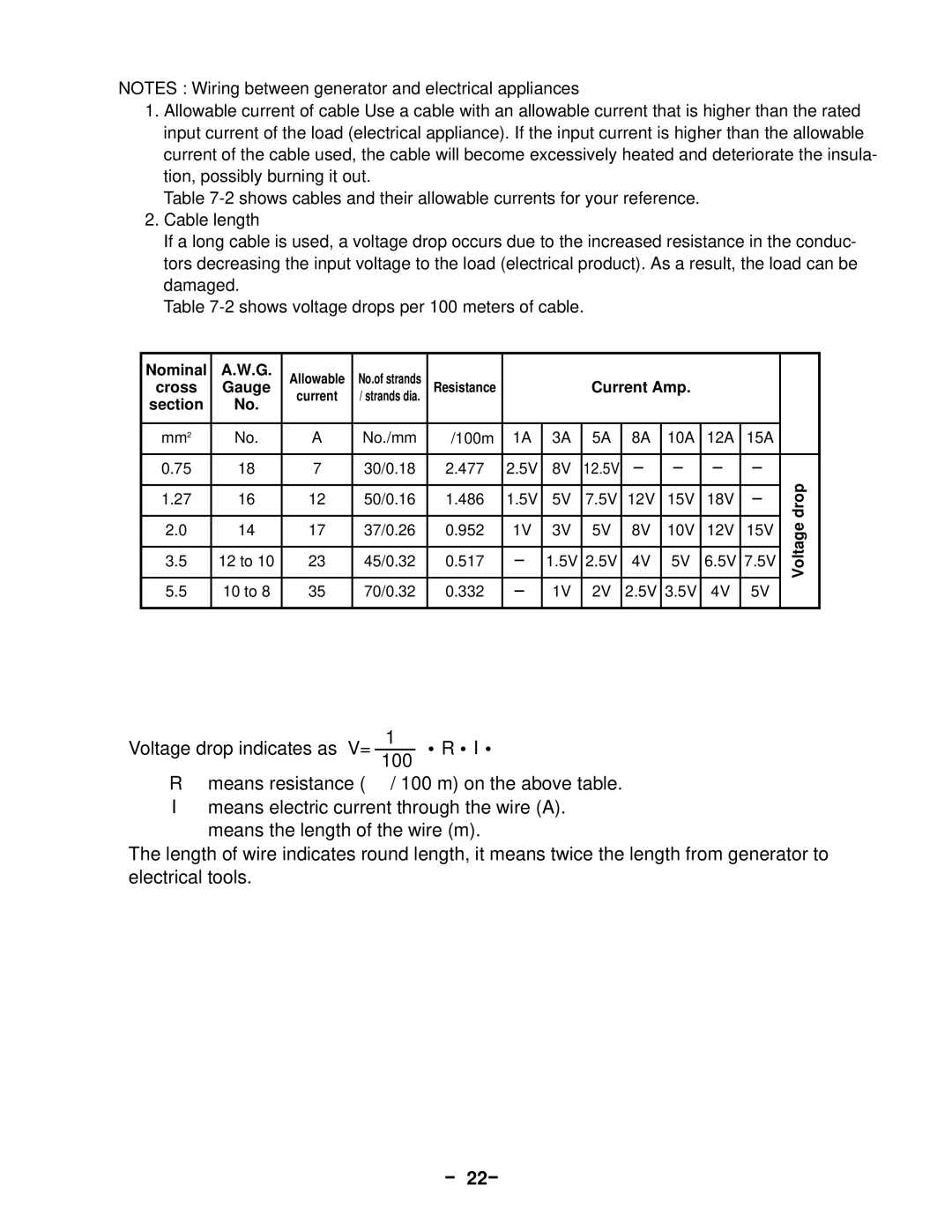
NOTES : Wiring between generator and electrical appliances
1.Allowable current of cable Use a cable with an allowable current that is higher than the rated input current of the load (electrical appliance). If the input current is higher than the allowable current of the cable used, the cable will become excessively heated and deteriorate the insula- tion, possibly burning it out.
Table
2.Cable length
If a long cable is used, a voltage drop occurs due to the increased resistance in the conduc- tors decreasing the input voltage to the load (electrical product). As a result, the load can be damaged.
Table
Nominal | A.W.G. | Allowable | No.of strands |
|
|
|
|
|
|
|
|
|
cross | Gauge | Resistance |
|
| Current Amp. |
|
|
| ||||
section | No. | current | / strands dia. |
|
|
|
|
|
|
|
|
|
|
|
|
|
|
|
|
|
|
|
| ||
|
|
|
|
|
|
|
|
|
|
|
|
|
mm2 | No. | A | No./mm | Ω/100m | 1A | 3A | 5A | 8A | 10A | 12A | 15A |
|
|
|
|
|
|
|
|
|
|
|
|
|
|
0.75 | 18 | 7 | 30/0.18 | 2.477 | 2.5V | 8V | 12.5V | ─ | ─ | ─ | ─ |
|
|
|
|
|
|
|
|
|
|
|
|
| drop |
1.27 | 16 | 12 | 50/0.16 | 1.486 | 1.5V | 5V | 7.5V | 12V | 15V | 18V | ─ | |
|
|
|
|
|
|
|
|
|
|
|
| |
2.0 | 14 | 17 | 37/0.26 | 0.952 | 1V | 3V | 5V | 8V | 10V | 12V | 15V | Voltage |
|
|
|
|
|
|
|
|
|
|
|
| |
3.5 | 12 to 10 | 23 | 45/0.32 | 0.517 | ─ | 1.5V | 2.5V | 4V | 5V | 6.5V | 7.5V | |
|
|
|
|
|
|
|
|
|
|
|
| |
5.5 | 10 to 8 | 35 | 70/0.32 | 0.332 | ─ | 1V | 2V | 2.5V | 3.5V | 4V | 5V |
|
|
|
|
|
|
|
|
|
|
|
|
|
|
Voltage drop indicates as V= 1001 ×R×I×![]()
Rmeans resistance (Ω / 100 m) on the above table. I means electric current through the wire (A).
means the length of the wire (m).
The length of wire indicates round length, it means twice the length from generator to electrical tools.
